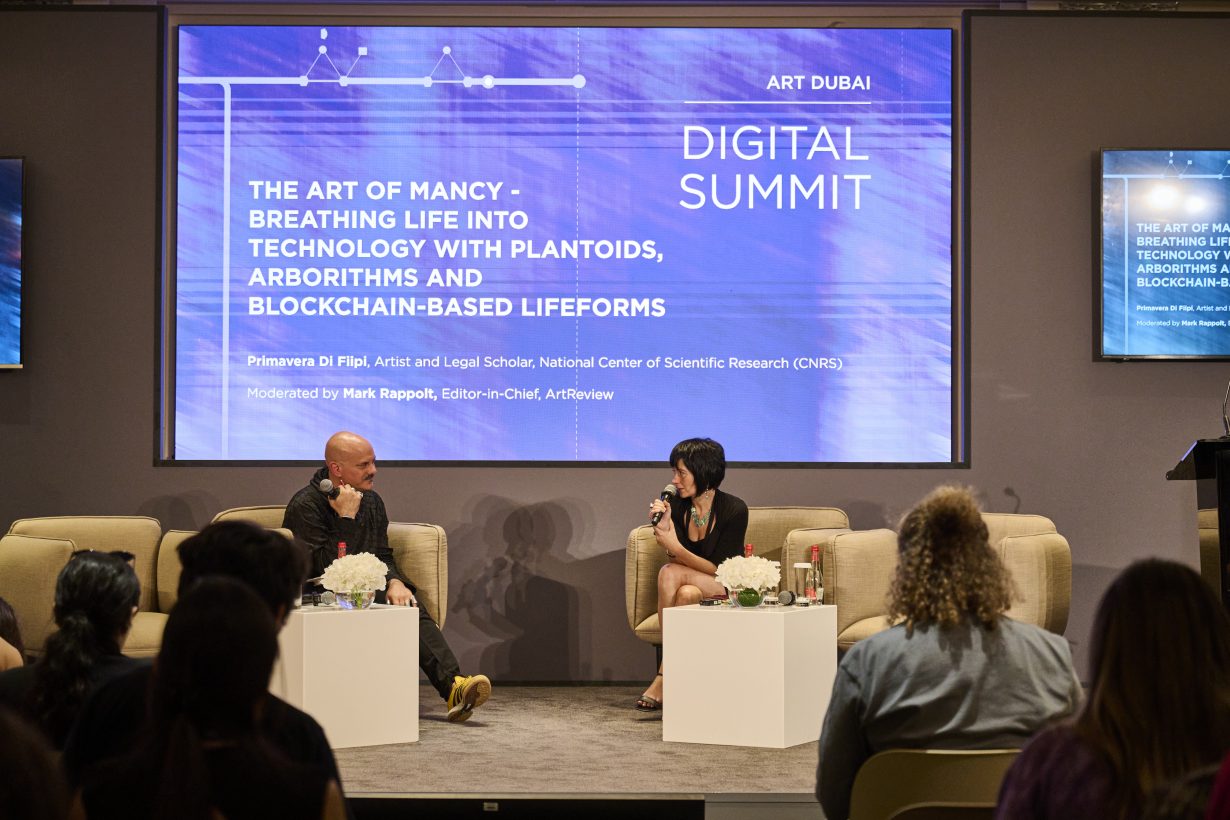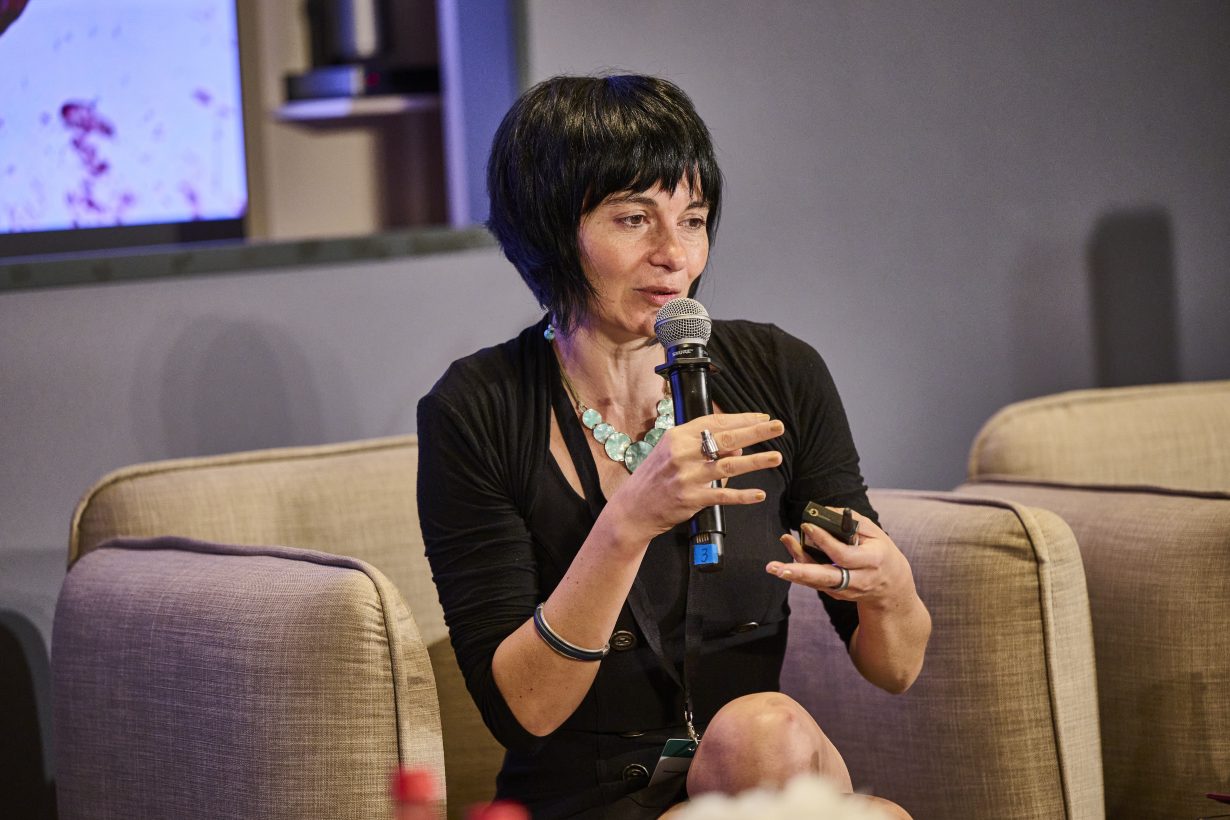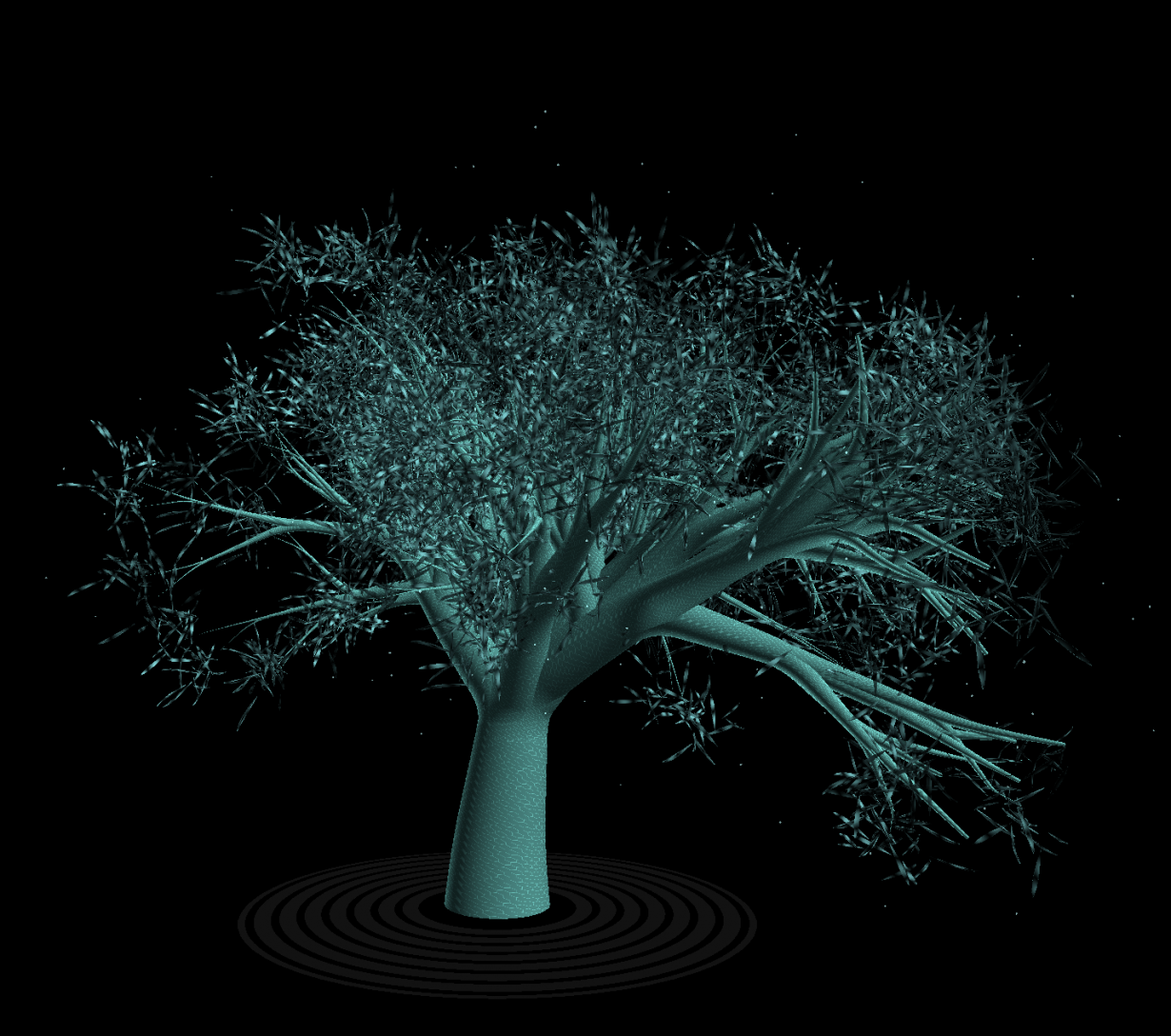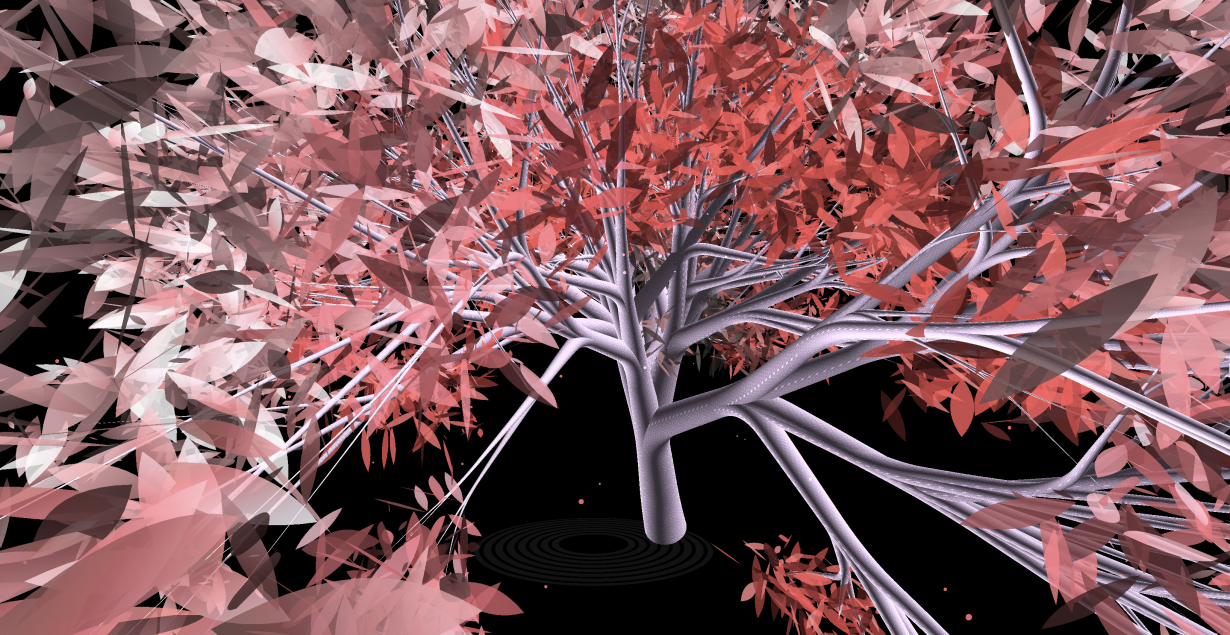In April, Art Dubai Digital hosted the second of edition of its Digital Summit, a two day programme of talks and debates with leading artists, curators and thinkers working at the intersection of art and technology. Under the title ‘After the Technological Sublime’ the summit offered a unique opportunity to discuss and debate how art and technology are addressing critical environmental, social, cultural and political challenges.
Artist and legal scholar Primavera De Filippi explores the legal challenges of AI and blockchain technology. Her AI-enhanced blockchain-based lifeforms – ‘plantoids’ and ‘arborithms’ – evolve and reproduce themselves, through as people feed them with cryptocurrencies.
On 19 April De Filippi sat down with ArtReview Editor-in-Chief Mark Rappolt to discuss how art is evolving beyond static creation into autonomous, living systems and how AI, blockchain and generative systems might redefine our relationship with the digital and organic world.
Watch the full summit session here, and read ArtReview’s introductory Q&A with De Filippi below.

ArtReview In the artworld, blockchain tech is mostly known as the basis for NFTs, which became overhyped by the speculative crypto bubble. But you see blockchain and NFTs as a space for more than empty speculation. Your new Arborithms NFTs for example, are not only representations of trees, but lifeforms in their own right, existing in blockchain code. What do such artworks tell us about what blockchain might do for us?
Primavera Di Filipi Most of my artistic practice is geared towards the creation of ‘blockchain-based lifeforms’, i.e. algorithmical entities that live on the blockchain. These synthetic lifeforms feed off cryptocurrency and use it to incentivise humans to help them evolve and reproduce. In the case of Arborithms, for instance, the economic model underpinning the art piece is such that humans are incentivised to breed digital trees, by reproducing them with one another, in order to discover new breeds that exhibit the most interesting traits. Every time a tree is used for reproduction, the owner of that digital tree earns royalties (where the amount of royalties increases with the number of time that the trees has been reproduced). This means that those who have created the most interesting tree, will potentially be able to earn the most out of it. This entirely changes the speculative dynamics. Instead of buying a NFT and holding on to it until it can be sold for a higher price – which is the standard speculative practice – Arborithms modify the payoff structure so that the best way to profit from the NFTs is to creatively and productively contribute to the Arborithm species, by breeding digital trees to create new trees with their own unique and distinctive features. Hence, the project establishes a symbiotic relationship between humans and Arborithms: the former rely on humans to evolve and reproduce, and the latter get rewarded whenever they positively contribute to the Arborithm species.

AR The recent acceleration of AI keeps grabbing the headlines, most recently with Open AI’s release of the Ghibli filter, leading to even more criticism of how AI is undermining human creativity. Where do you see the positive potential for AI in art?
PDF I’m a copyright scholar, so the legal challenges of generative AI with regard to copyright law are very close to my heart. Today, the large majority generative AI models are trained on copyrighted content, without obtaining a prior license or authorisation from the copyright owners. This training is used to generate the model weights that will then be able to generate an indefinite number of artworks, inspired or derived from the training dataset. In my view, the copyright issues emerge not at the moment of training, but at the moment of generating new works. If the model generates works that are sufficiently novel and distinctive from the original works that it has been trained on, there is no claim for copyright infringement: the model simply used the training data set as a source of inspiration to create new works. This is what humans do all the time. However, if the models generate works that are substantially similar to those that belong in the training dataset, then there could be a claim of copyright infringement, because this is act on longer qualifies as inspiration, but rather as reproduction. In the case of Ghibli, the line is blurry, because copyright law was never intended to protect the ‘style’ of an artist, but only the tangible expression that embodies that style. It is therefore up to a judge to decide whether a particular work generated by OpenAI’s generative AI model is substantially similar to existing works, and should thus be regarded as a derivative work which requires the authorisation of the relevant right holders, or whether it is sufficiently novel and original as to qualify as a standalone work that is inspired, but not derived from Ghibli’s works.

AR The situation is similar to what happened with the advent of the Internet and digital technologies. On the one hand, the Internet was seen as a threat to the livelihood of many artists and musicians, as the digital medium made it easy to reproduce and distribute content all over the world, in just a few seconds. On the other hand, it also offered many new opportunities for artists to disseminate their works and to engage with their audience in many new ways that were not possible before. The same is true for generative AI. Depending on the way it is used, it can be seen either as a threat or as an opportunity for human creativity.
PDF Personally, I like to see generative AI as a technology that can contribute to expanding human creativity, if used in a rightful and ethical way. On that point, I have contributed to the creation of an online platform, alias.studio, which is specifically intended to help artists train their own generative AI model, and then either use it internally, for personal purposes, or publish it and make it available to the world at large, for others to generate new works from it. This platform promotes a new – more direct – relationship between artists and their audience, as artists can invite the audience to explore their own aesthetic universe, the latent space of possibilities that has been codified into their generative AI model, and let them navigate this space in order to discover new works. This makes it possible for the audience to request the generative AI model to create more personalised works that respond to their specific interests or curiosity – works that undeniably impersonate to the style of the artist, but that the artist did not have the time or the idea to create. And if they like these works, they can mint them and collect them as an NFT, thereby rewarding the artists for their past creative endeavours, which were instrumental for the manifestation of these new works.
AR Works like Arborithms and your earlier Plantoid suggest a different relationship between humans and technology, in which humans interact with systems that may have their own goals and purpose, and which can sustain themselves. You’ve talked about humans cocreating artworks with technology. Is the age of the uniquely creative human artist over, or is it a matter of thinking of a more open relationship to artistic authorship?
PDF My work is exploring new forms of human creativity that is augmented by technology, rather than being replacing by it. In fact, all my works are deeply anchored on human creativity, as they require the creative contributions of humans in order to evolve and reproduce themselves. Plantoids collect cryptocurrency and then use these funds to ‘hire’ humans for creating new copies of themselves. These commissioned humans are given guidelines and instructions on how to produce a new Plantoid, but they are free to use their own artistic discretion in order to come up with new features and aesthetic components that will make the new Plantoid the most appealing to other humans. In the context of Arborithms, the breeding of digital trees requires the creativity and aesthetic judgement of humans, who are economically incentivised to produce digital trees with the most unique and interesting traits, so that they will be further reproduced by other humans. In both cases, humans collaborate with technology – and with one another – in order to bring new species of life, using their creativity to enhance the genetic code of these blockchain-based lifeforms. Hence, human creativity is not over. Yet, it is increasingly distributed amongst a large number of people, who each contribute a portion of creative endeavour to an overarching art piece that is in an constant state of evolution. Technology thus becomes a means by which humans can collaborate at scale, collectively contributing to a single dynamic artwork, in an asynchronous manner.

AR Blockchain offers the possibility of a less proprietary approach to the economics of IP – not just unique authors and their copyrighted works, but authors benefiting from their work being used and reworked. Meanwhile controversies around copyright and AI makes artists cautious about how their work will be exploited. How do you see things developing in the near future?
PDF I consider myself a ‘protocol artist’: I produce my artworks, but also – and perhaps most importantly – I design and implement the protocol though which other artists can instantiate more of my works. In the case of both Plantoids and Arborithms, my artistic contribution is not limited to the first instances of these works, but also extends to the underlying protocol that makes their existence possible. This protocol, which I used to instantiate my initial works, can be used by everyone else in order to instantiate additional works. Every time one of my protocols is put into use, my body of work is expanded with the resulting work. This work, albeit created by someone else, is ultimately a co-authored work: it incorporates both my artistic imprint (as the author of the protocol) and that of the person instantiating it into a new artwork (as the author of that artwork).
In the context of Protocol art, reproduction is not something to preclude or prevent – as in traditional copyright law – but rather something to promote and encourage, as every use of the protocol entails the re-production (i.e. new production) of a new artwork. Instead of merely replicating an existing work, re-producing a protocol requires a certain degree of artistic discretion to be put into the manifestation of the a new artwork, which is distinct from any previous instantiations. The more the protocol is used by different people, the greater the number and the variety of works that will be produced, each bringing a new artistic contribution to the same body of the protocol works.
While protocol art does not depend on any type of technological artefact, generative AI has brought these practices to the forefront. Training a generative AI model is akin to creating a protocol that can be used to instantiate an indefinite number of works, by simply prompting the model. Each of these generated works contributes to expanding the body of the work of the protocol artists whose works have been used to train the generative model, even if that person has not been directly involved in the making of these new works. Thus, once again, re-production is encouraged rather than precluded, as protocol artists benefit from the higher visibility that third-parties using their protocol will bring to them, provided that proper attribution is given.